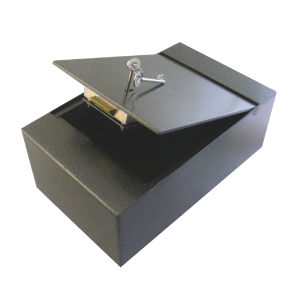What Types Of Safe Are There?
A safe provides an extra level of security for your home or workplace, and in most cases the user dictates what is stored in there. At home, you want to store irreplaceable personal items, cash, passports and important legal documents; essentially anything that, if stolen or damaged, could cause you personal distress, leave you liable to fraud or identity theft or could cause you legal issues. In the workplace a business uses safes for petty cash, but also for storing hard copies of contracts and important documents, and also intellectual property and any other digital data that needs protecting, such as GDPR data.
there. At home, you want to store irreplaceable personal items, cash, passports and important legal documents; essentially anything that, if stolen or damaged, could cause you personal distress, leave you liable to fraud or identity theft or could cause you legal issues. In the workplace a business uses safes for petty cash, but also for storing hard copies of contracts and important documents, and also intellectual property and any other digital data that needs protecting, such as GDPR data.
So because there are so many items we may need to store in a safe, and because the value of these items can differ quite significantly, there are a huge amount of different types of safe available on the market. Essentially, whatever type you choose, you want a safe to be:
- Lockable and secure
- Accessible to key people
- Strong and robust
- As discreet and undetectable as possible
Different safe designs
The different types of safe on the market do not just differ by size, but also in how you use them. We will look at lock types in a moment, but first let’s look at safe design:
These can range in size from small and almost portable safes to large, two tonne safes. They will be made from tough steel and re-enforced concrete so will be heavy, they will have a range of different locking options. They will be drill-resistant and tamper-proof and should have the option to be anchored to the wall or floor. Free-standing safes can be used in a domestic or commercial setting and depending on size, can be concealed under desks, in a locked drawer, in cupboards or in wardrobes.
As the name suggests, these are safes which can be concealed in a wall cavity. As a result these are typically smaller safes, which makes them useful for smaller houses or flats, because they don’t encroach into a living space. They can carry most of the features of a free-standing safe, but can also be disguised by and concealed behind a mirror or picture hung on the wall.
Much like a wall safe, a floor safe is built into a cavity embedded in a concrete floor. The safe is level with the floor surface and hence can be covered by carpet or a rug depending on how often you wish to access it. But this also means that the safe is almost completely undetectable by a burglar.
These are much smaller safes designed to protect data stored on CDs, DVDs, portable hard drives or USB sticks. These safes are built to protect the contents from theft, but also specifically from magnetic fields or electrostatic interference that could erase or harm the data. Access can be controlled to ensure only nominated personnel can open the safe.
Although most safes will be designed to be fire-resistant, where there is a high risk of fire there are different levels of fire protection available in fire-resistant safes. The best safes are 60 to 90 minute fire-rated, meaning that there is a window of 60 to 90 minutes for a fire to be dealt with before it will start to affect the contents of the safe.
At the smallest end of the scale we have cash boxes, which are effectively small tins with compartments for different denominations of cash and coins. These are typically used by business for handling petty cash, but are also useful for anyone with a small business, as they are portable and can be used like a cash till at markets, fairs or pop-up shops etc.
Different lock types
Another way to distinguish between safes is the locking system they use. These can be:
These are the most common type today because they offer enhanced security. They use a digital keypad and hence are quick and simple to use, have a clear display screen for the user and the user can also set and re-set their own code.
Gaining in popularity are biometric locks which use a fingerprint impression sensor to disengage a lock, much like a smartphone screen. This offers a very advanced level of personal security and is also very quick and simple to operate.
- Mechanical/key-operated locks
These are the more traditional methods of unlocking a safe. A mechanical safe uses a spinning dial which is rotated to mimic a code. This can be time-consuming and is hard to reset. Alternatively you can use a key to unlock a safe. This is very easy but carries the threat of a key being lost, stolen or copied.
Considerations when choosing the right type of safe
Safes can incorporate any of the above features to provide exactly the type of safe that suits your home or business. But fundamentally you need to consider:
- What do I need to store?
- Where can I keep the safe?
- How often do I need to access the safe?
- Who do I want to allow access to the safe?
- What is the severity of the security/fire risk in this location?